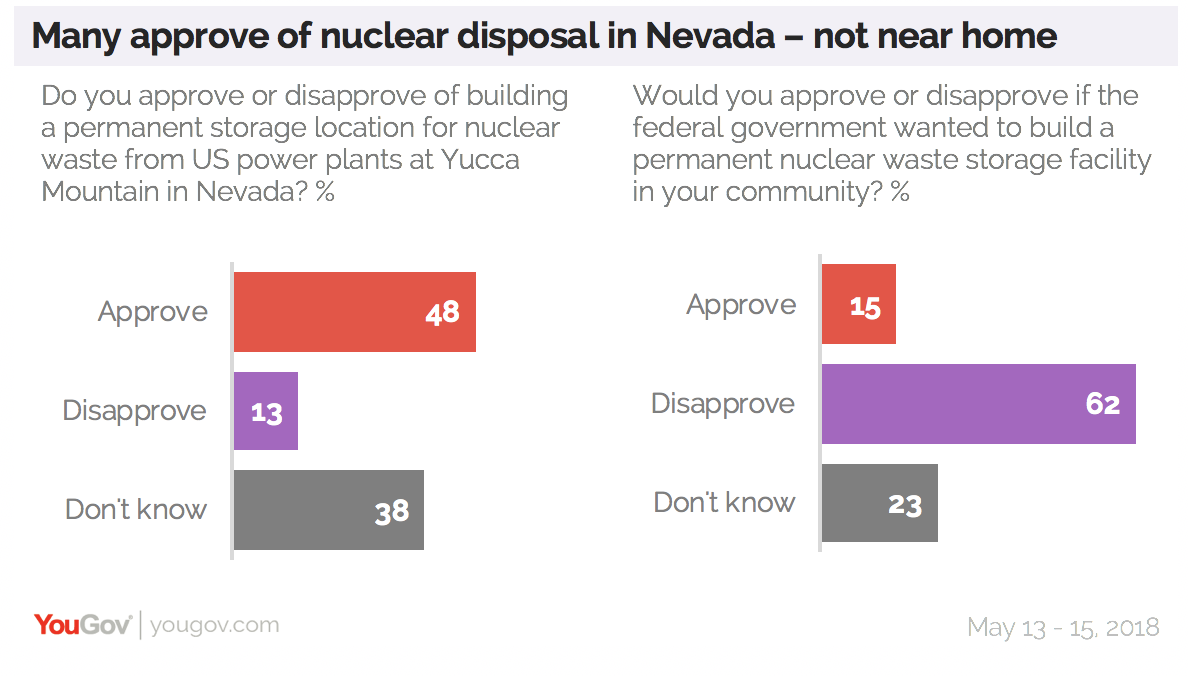The company responsible for delivering Sweden’s deep geological repository, SKB, are planning to subject their research into copper corrosion to international peer review in the new year. SKB believe this is the most transparent and open way in which to address concerns about the contentious issue, which has held up final decision-making on the Swedish national repository for higher activity radioactive waste.
Earlier this year the Swedish Environmental Court largely approved SKB’s plans for a geological disposal facility in Osthammar. However, the Court had concerns about the speed at which copper canisters corrode and the potential consequential environmental impact. Conflicting scientific evidence was presented to the Court. The Court decided that this was something the Swedish Government needed to consider further before any approval was given to the planned radioactive waste disposal facility. The Swedish Government asked SKB to provide additional information by 31 March 2019.
It is understood that SKB plan to have completed their review by Christmas, and will then offer their findings for independent international peer review.
Local community campaign group OSS are concerned that SKB have not taken sufficient time to review all necessary scientific research. They remain concerned that SKB are focused on defending their original position, and believe that the international review process will simply highlight divided scientific opinion, rather than provide clarity.
Although SKB have confidence in their original research (backed by the nuclear regulator), they acknowledge the need to review everything to address the Court’s concerns. They also believe that in opening up the findings to international review will help build public confidence in the results.
Although the Swedish Government provided no timescale on when they might rule on whether and how to proceed with the repository, there seems to be a general feeling amongst all observers that it will be 2020 before any substantive progress is next likely to be made.
However, there has been some positive news for the planned repository siting process. The Municipal Council of Oskarshamn (who lost out to Osthammar as being hosts for the planned repository) have voted in favour of the planned new encapsulation plant for spent fuel which will be built in their municipality. This decision was not expected to be made quite so quickly, but does provide clarity, removing the threat of Oskarshamn exercising their veto when the Swedish Government eventually does formally seek their approval.
Last week, the Geological Society held an event at which RWM presented an update on the GDF National Geological Screening exercise. There was no ‘news’ as such, but for a non-geoscientist it was an interesting event to attend. Videos of each presentation can be viewed on the Geological Society website.
I am not going to pretend I understood everything that was discussed. I have no geology-genes, and geoscience has a language and culture all of its own, but these were my simple mind’s takeaways from the event:
Repeated delay in finalising geological disposal policy is a key constraint on the Nuclear Decommissioning Authority’s (NDA) long-term strategy to clean up the environment, according to the National Audit Office (NAO). The GDF delays could be costing the UK taxpayer billions of pounds.
In its recent report, “The Nuclear Decommissioning Authority: progress with reducing risk at Sellafield”, the NAO makes clear (p23, Figure 5):
The NDA needs a long-term repository for spent fuel and high activity waste to progress its decommissioning plans. However, the Department’s plans to identify a suitable location have been repeatedly delayed.
In simple terms, failure to progress the GDF means that the NDA has to plan for interim storage facilities which may not be needed, and has to potentially package radioactive waste more than once. GDF uncertainty can therefore cost taxpayers many additional, unnecessary billions of pounds. The need to maintain dozens of interim surface storage facilities, and to repackage waste if original canisters decay, also increases risk to public health. It may be a small extra risk, but it is an avoidable risk.
The NAO is the UK’s independent watchdog, reporting to Parliament on how effectively public bodies discharge their duties and use taxpayer’s money. Its recent Sellafield report does not focus on the GDF, but is a higher-level analysis of the projected costs and risks of nuclear decommissioning. The NAO note that during its lifetime the NDA has successfully managed to stabilise long-term projections for the cost of nuclear decommissioning.
Although the 2014-15 estimated costs may be double the projected costs made in 2004-05, the NAO commend the NDA for providing a clearer understanding of the scale and complexity of managing legacy radioactive wastes. Estimates for the final costs of decommissioning have now stabilised at around £120bn. However, the NAO remains concerned about the continuing wide range of estimated final costs — which is caused by the long-term horizons of the decommissioning programme and the uncertainty about any work planned beyond 10 years, of which the GDF is a key part.
The GDF is a key part because greater certainty will allow waste to be packaged in appropriate disposal canisters just once. And the amount of required interim storage for waste awaiting final disposal can also be better defined.
The NAO actually provides a (non-GDF) example of how the costs of repackaging radioactive waste can easily escalate. It cites the increased cost of having to repackage some of the Plutonium stock. The material was packaged either in canisters which are not appropriate for the new Plutonium store, or some canisters have decayed to the point the plutonium needs to be placed in new, safe canisters. The estimated cost of this process has more than doubled from £470 million to between £1bn – £1.5bn.
The increased risk of transferring radioactive waste from old to new canisters is also evident from an incident in the United States in April 2018. Waste that had been stored at the Idaho National Laboratory (INL) since the 1950s and 1960s had to be placed in new canisters in preparation for their permanent disposal at WIPP. There was an unintended release of radioactivity while waste was being transferred from old to new canisters. On this occasion there were no injuries to workers or health risk to the wider public. But it underlines the benefits of creating certainty so that waste is packaged just once ready for disposal.
The NAO state that the latest earliest estimated time for the GDF to be operational is now at some point between 2043-2048. The NAO’s report implicitly makes clear that in terms of both cost and risk, the sooner Government progresses the search for a GDF, the better for all of us.
Given the Government’s recent re-commitment to the new nuclear programme, you’d think that from their perspective they’d see the sense in progressing a GDF if only to help stabilise long-term decommissioning costs. Uncertainty about long-term obligations is a significant factor undermining investor confidence — a GDF would help Ministers create a more positive nuclear investment environment.
GDFWatch has been at the forefront of recent efforts to enhance direct international collaboration between local authorities and communities.
In a time when public trust is low, communities and local politicians are more likely to get the trusted information and assurances they seek from ordinary people like themselves who have been through a similar experience. That is why building international relationships between GDF-affected communities is so important.
And that is why we were delighted when the Nuclear Decommissioning Authority (NDA) generously invited the pan-European grouping of municipalities with nuclear facilities, GMF/ENWD, to attend their recent annual Stakeholder Summit.
Over 50 local politicians and local government officers from across Europe joined their UK counterparts from NuLeAF (the Local Government Association’s nuclear special interest group). They heard a variety of presentations, and participated in a number of interactive workshops, on the UK’s geological disposal programme, how UK local authorities work with central government and the NDA, and the UK’s collaborative approach with communities to delivering a local socioeconomic legacy for decommissioned nuclear sites.
Given the positive discussion, we look forward to further closer working between communities and local authorities across Europe, and beyond.
The key headlines from the 2018 GDFWatch Stakeholder Survey are:
The backdrop of Brexit tempers the optimism of most opinion polls about any aspect of public policy and government at the moment, and despite these headline findings there are some real positives in the survey results. For more detail please click on each of the links below.
Local Authority ‘veto’
A more detailed analysis of the survey findings reveals the sheer scale (98%) of opposition to making local authorities responsible for GDF siting decisions – even local authorities don’t believe it’s the right way forward!
RWM Readiness
Scepticism might be expected amongst critics and those having little contact with RWM, but concern is also widespread across those who work closely with RWM about their ability to engage effectively with communities once the siting process relaunches — however, there are important ‘anomalous’ survey findings, which signpost a potentially productive way forward for RWM.
GDFWatch: User feedback
The phenomenally positive feedback is both gratifying and humbling. Users have offered their thoughts on what GDFWatch should do more or less of in the future, and we will be returning to these reader ideas later in the summer.
Overview
The number of respondents to this survey is too small to make most answers ‘statistically significant’. But given the profile of respondents, the survey does provide a powerful indicator of sentiment amongst those closest to the GDF process.
GDFWatch followers may be small in number but are big in influence. They span the most GDF-informed and interested leaders across local government, regulators, nuclear industry, NGOs, academia, trades unions, business and civil society. Success or failure of the GDF siting process will be shaped by this audience’s perception of the Government’s policy decisions and RWM’s implementation actions.
Almost 50 (30-50%) of the 100-150 active UK-based GDFWatch followers responded to the survey – that is an exceptional and significant response rate. Thank you to everyone. This level of response expresses and underlines the passion and commitment of everyone involved in the GDF process.
Click here for a summary of the responses to the survey.
The appointment of two new independent Non-Executive Directors (NEDs) has been announced by Radioactive Waste Management Limited (RWM), the delivery body for the UK’s geological disposal facility (GDF).
At first analysis the announcement looks like a positive step by RWM, bringing much-needed expertise to the organisation, and potentially increasing RWM’s independence from the Nuclear Decommissioning Authority (NDA).


In appointing Karen Wheeler CBE and Professor David Prout, RWM’s recently-appointed Chairman Malcolm Morley appears to be bringing in the non-technical skills, experience and perspectives that RWM has been missing but does require as the organisation transforms from an introspective academic research body into a highly-visible infrastructure, economic development and community engagement operation. These include practical experience of:
It is understood that the two appointments are additional to the current Board membership, rather than replacing Board members whose terms have come to an end. The addition of two independent NEDs now means that with Malcolm Morley there are 5 independent NEDs, two NDA-appointed Board members, and 4 RWM senior Executives. This potentially dilutes the NDA’s influence and is a step towards a) addressing concerns about conflicts of interest raised by the Committee on Radioactive Waste Management (CoRWM) and others, and b) returning RWM’s independence from direct NDA control as envisaged when RWM was created in April 2014.
The appointments come at a time when RWM is preparing to relaunch the GDF siting process amid widespread stakeholder concern at its readiness and competence. They seem to be an important step in the right direction.
The RWM Board membership is now:
Malcolm Morley (Chair, independent Non-Executive Director)
Claes Thegerström (independent Non-Executive Director)
Michael Bowman (independent Non-Executive Director)
David Prout (independent Non-Executive Director)
Karen Wheeler (independent Non-Executive Director)
Andrew van der Lem (NDA Head of Government Relations) (Non-Executive)
Melanie Brownridge (NDA Head of Technology) (Non-Executive)
Bruce McKirdy (Managing Director RWM) (Executive)
Ann McCall (Geological Disposal Facility Siting and Engagement Director RWM) (Executive)
Peter Lock (Health, Safety, Security, Environment and Quality Director RWM) (Executive)
John Corderoy (Programme Director RWM) (Executive)
Accusations that the leading ‘left-wing’ US politician Bernie Sanders tried to ship radioactive waste from his prosperous neighbourhood to a poor Latino community in Texas are the subject of an analysis by a fact-checking/myth-busting website.

It appears true that Bernie Sanders supports the geological disposal of radioactive waste, as can be seen from what he said on the floor of Congress when legislation was being considered:
“Let me touch, for a moment, upon the environmental aspects of this issue. And let me address it from the perspective of someone who is an opponent of nuclear power, opposes the construction of nuclear power plants and if he had his way, would shut down the existing nuclear power plants as quickly and as safely as we could.
“One of the reasons that many of us oppose nuclear power plants is that when this technology was developed, there was not a lot of thought given as to how we dispose of the nuclear waste. But…the reality, as others have already pointed out, is that the waste is here. We can’t wish it away … So the real environmental issue here is not to wish it away, but to make the judgement, the important environmental judgement as to what is the safest way of disposing of the nuclear waste that has been created.
…Leaving the radioactive waste at the site where it was produced … is horrendous environmental policy… This is not a political assertion, it is a geological and environmental reality.”
However, the fact-checking website Snopes.com, concludes that the accusations being circulated by conservative media in the US, while based on objective facts, critically, leave out important context. Sanders did co-sponsor environmental legislation designed to better manage radioactive waste, but neither he nor the legislation specified any particular location. As would seem clear from his quote above, Sanders was motivated to find a location based on scientific analysis and best environmental protection practice.
The issue of radioactive waste has become a major political story since Donald Trump came to power. Perhaps surprisingly it is generally a bipartisan issue, which the majority of Americans back. You can read some more about recent events:
There are also hundreds of articles on the issue from US national, regional and local media in our international media archive.
There have been series of reports in the past couple of weeks from leading institutions on the UK’s infrastructure needs, each of which is immediately relevant to the GDF programme.
The Infrastructure & Projects Association (IPA), the government body charged with ensuring high performance and best practice in the delivery of major public projects, published its Annual Report 2018, in which the risk assessment for the GDF programme was raised to an Amber/Red ‘escalated risk’: “successful delivery of the project is in doubt, with major risks or issues apparent in a number of key areas. Urgent action is needed to address these problems and/or assess whether resolution is feasible.”
However the IPA does subsequently note that progress has been made since it made that assessment, saying: “The rating reflects the early stages of a long term programme that involves working in partnership with communities and which has experienced slippage due to a number of external factors. In November 2017 the IPA completed a project assessment review and reported an overall Delivery Confidence Assessment of Amber. Further progress was achieved in January 2018 with the launch of two consultations: the draft Working with Communities policy and the draft National Policy Statement for Geological Disposal Infrastructure.”
This caution by the IPA is in line with the recent National Audit Office (NAO) report on Sellafield, in which delays in progressing the GDF programme are identified as a major risk to the Nuclear Decommissioning Authority achieving its objectives.
The National Infrastructure Commission (NIC) has also published its first ever National Infrastructure Assessment. The Assessment does not specifically reference the GDF, but does clearly lay out the nation’s needs to plan better for its long term needs, and provides a clear narrative and framework in which the GDF can easily be seen as critical to regional development, delivering the industrial strategy, and helping to achieve a low-carbon future.
The Institute for Government (IfG) have also published a report entitled: How to be a minister: Making decisions on infrastructure. The report offers advice to Ministers, most pertinently saying:
But the advice is not just to Ministers. The IfG’s analysis should underpin the approach of the whole GDF programme.
The GDF programme has not yet risen onto the horizons of these bodies in any substantive sense, and yet it will be one of the largest, longest-living and longest-lasting infrastructure projects in this country. We will be returning to this issue in the autumn.
Half of Americans believe that it is better to have a single disposal site for radioactive waste than keep the waste on the surface at multiple sites around the country.
That is the finding of a YouGov poll published this week. The poll covered a number of major public policy issues (eg immigration, terrorism, N Korea, etc). But in a clear signal that radioactive waste disposal is currently a major political issue in the US, the poll also asked people about their attitudes to radioactive waste disposal. Unsurprisingly almost two-thirds of Americans would not want a GDF near where they live.
You can access more detail from the YouGov poll here, but the relevant section on geological disposal is set out below:

In writing this ‘nothing happening here’ update, there’s always a risk “sod’s law” will come into play, and the Government will sneak out a GDF announcement right before Christmas. My Santa list and wishful thinking aside, that’s now very unlikely.
The question therefore becomes — when? When will the GDF policy move forward?
It’s not unreasonable to assume that nothing will now happen until the Brexit boil is lanced. Whenever and however that happens.
The polymorphous political permutations tend to suggest that we’ll have at least one new Prime Minister during 2019. Whether that’s by internal leadership change or general election, it will mean new Ministers and a new Government. That Government will be focused on sorting out the complexities of leaving the EU, or of refocusing domestic political and policy priorities if we end up remaining in the EU. In either scenario, it’s hard to see how geological disposal is going to be on the list of early policy initiatives for a brand shiny-new Government. We can hope, but geological disposal policy is a repeated exercise of experience extinguishing hope.
Even on an optimistic timeline, we are probably looking at summer 2019 (at the very earliest) before Ministers are realistically going to be able to revisit geological disposal policy. But given recent history of the UK’s GDF programme, and the generally glacial pace of geological disposal programmes around the globe, who would stake much money on that?
Faced with these barren realities, it will be interesting to see how Government officials respond to a potentially protracted delay. In a politically unstable, cash-strapped, policy void the understandable default position is to hunker down, temporarily mothball the programme and keep it on life-support until happier days (and interested Ministers) arrive.
But could we use the delay period more productively? Since we have no Ministerial decision, in due course a new Minister will need to be briefed to be brought up to speed with the policy, and for policy advice to be resubmitted to that new Minister. Thus, technically speaking, until then we remain in a policy development and discussion phase. This affords an opportunity to continue refining the policy and how it might be implemented, to ensure any new Minister has the very latest thinking and options (rather than those dusted down from the year before).
We’ve previously reported on disquiet in the civil society sector that they’re not more involved in shaping a partnership framework in which they will be the eventual partners. There’s also widespread stakeholder concern that there has been too little general awareness-raising, as required by S7.4 of the 2014 White Paper. Given that we are still in a world of policy principles rather than detail, perhaps this time can be used productively, through structured (if low-key) dialogue between BEIS and key stakeholders to help build relationships, refine the policy, and improve the environment into which the policy will eventually be launched.
A Government announcement in the coming days may happen, rendering all the analysis above moot. We can hope so. If they do, we will be in contact. But it’s unlikely we’ll speak again before the Christmas Recess, so a happy holiday to everyone. See you in 2019.
